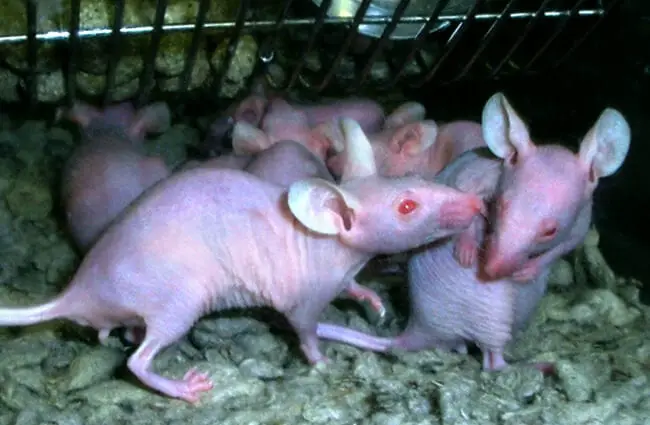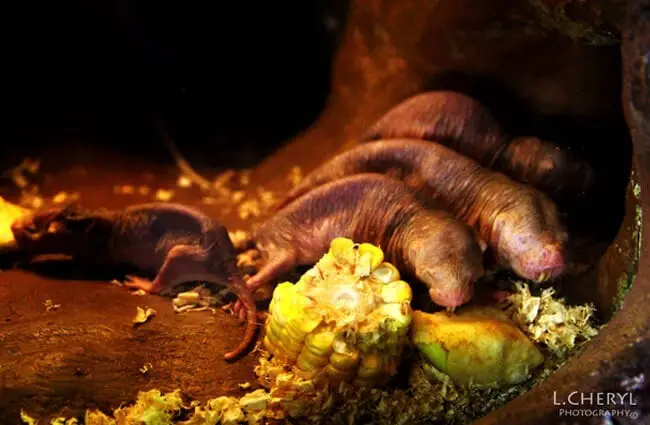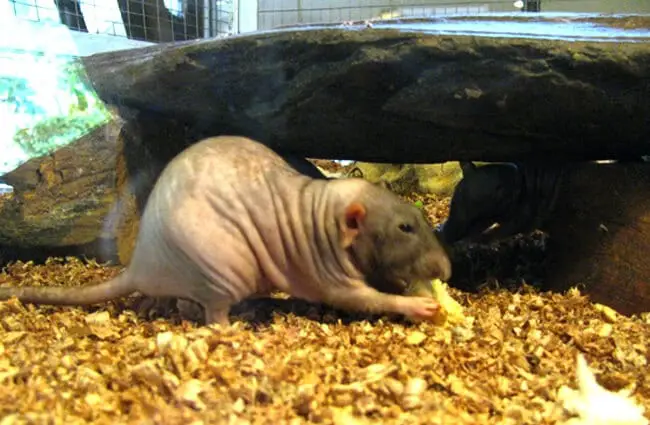You’ve probably heard of the naked Mole Rat, but did you know that the unsightly little rodent isn’t the only species of Mole Rat out there? The rest of the Bathyergidae family also shares that same name.
Researchers recognize at least 23 different species! All of the various species live in tunnels underground. Read on to learn about the Mole Rat.
Description of the Mole Rat
The name isn’t where the resemblances end. These creatures look quite similar to moles, with tiny eyes and ears. Their limbs are short, and their bodies are stout and cylindrical.
Different species come in different sizes. Some measure just a few inches long, while others reach nearly a foot in length. The largest individuals exceed three pounds or more.
Interesting Facts About the Mole Rat
These subterranean rodents live an interesting life. Learn more about their various traits and behaviors below.
- Not a True Mole– Despite their shared name, researchers do not believe moles and Mole Rats are closely related. However, they both look similar, behave in a similar fashion, and live underground.
- Convergent Evolution – This phenomenon is known as convergent evolution, and it occurs when two unrelated animals develop traits to live in a specific ecological niche.
- Eat Dirt – While they don’t eat the soil that they live in, these rodents usually use their long front teeth to dig through the dirt. They have incredibly powerful jaws and long teeth which effectively bore through tough sediment.
- Outstanding Overbite – In fact, those massive front teeth, also known as incisors, are so long that they protrude from the mouth. Even with its mouth closed, this rodent’s teeth point out dramatically. This lets them dig using their teeth without filling their mouth with dirt.
Habitat of the Mole Rat
All of the various species live underground. Each has its own preferred habitat type. These rodents utilize a wide range of soils and ecosystems. Some live in the ground beneath grasslands, others burrow under woodlands, forests, and more.
These creatures occupy arid, semi-arid, temperate, and tropical regions.
Distribution of the Mole Rat
These rodents live in regions of Africa below the Saharan Desert. Each species has its own unique distribution. Some live across wide regions, while others occupy only a small area.
Diet of the Mole Rat
While most species are herbivores, and eat only plants, some also feed on insects and invertebrates as well. They typically do not come above ground to forage, but dig tunnels for plant parts below the ground.
Some common foods include roots, bulbs, tubers, vegetables, and rhizomes. They also consume ants, worms, insect larvae, and other invertebrates.
Mole Rat and Human Interaction
Most of the time, humans do not directly interact with these underground creatures. However, farmers do not appreciate the damage that these rodents can cause to crops. In some areas and certain species, humans capture these rodents for food as well.
Human impact on a population varies from one species to the next. Some species have large numbers and human activity doesn’t impact them. Others face population decline from hunting and trapping.
Domestication
Humans have not domesticated these rodents in any way.
Does the Mole Rat Make a Good Pet
No, Mole Rats do not make good pets. They spend nearly all their life underground, so you would rarely interact with them in any way.
Mole Rat Care
Zoos house some species, like the naked Mole Rat, for research and public education. They keep these creatures in habitats with plenty of substrate for them to dig in, or artificial tunnels to explore. Most zoos also provide glass siding so viewers can see the animals interacting and exploring their underground home in a way that would otherwise be impossible.
Behavior of the Mole Rat
The behavior of each species varies from the next. Most of the various species live solitary lifestyles and only interact with other members of the species to reproduce. Sometimes tunnel systems lie in close proximity, but the animals do not necessarily interact.
A few species live in colonies, and some even have incredibly complex social behavior. For example, in the naked Mole Rat social behavior is similar to that of bees or ants. One pair reproduces, and the rest of the colony cannot breed.
Reproduction of the Mole Rat
Reproductive habits vary from one species to the next. Many produce one or two litters in a year, but some breed more frequently. In most species, the litters contain between two and five young, with an average of about two or three.
The gestation period lasts between two and four months in most species. Some wean their young in just a few weeks, while others take several months. In some species, the young reach independence at two months old.











![Red Angus Closeup of a beautiful Red Angus cowPhoto by: U.S. Department of Agriculture [pubic domain]https://creativecommons.org/licenses/by/2.0/](https://animals.net/wp-content/uploads/2020/03/Red-Angus-4-238x178.jpg)












![Red Angus Closeup of a beautiful Red Angus cowPhoto by: U.S. Department of Agriculture [pubic domain]https://creativecommons.org/licenses/by/2.0/](https://animals.net/wp-content/uploads/2020/03/Red-Angus-4-100x75.jpg)

